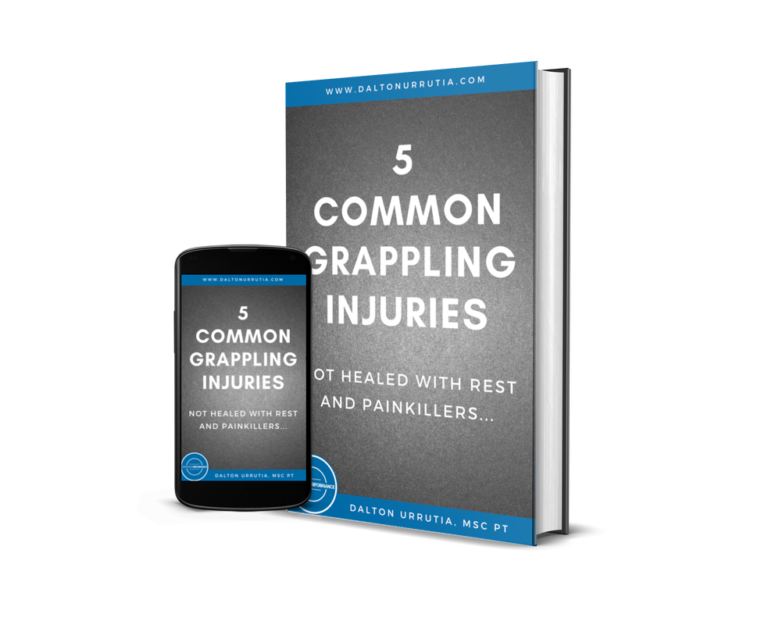Best Conditioning Training for Grappling

If you have done any BJJ, wrestling, or other grappling sports, you know how important conditioning is. Whether you have just started, or have multiple years under your belt, conditioning will always play a part in your training. Improving conditioning isn’t an easy task, as it involves improving and sustaining your strength, aerobic, and anaerobic capacity over time. But with the correct workouts and programming, you can improve your conditioning much much quicker.
Commonly, High intensity interval training (HIIT), is used to effectively improve metabolic conditioning, however no strength aspect is included. High Intensity Functional Training, or multi-modal HIIT, is a program which involves challenging metabolic conditioning exercise, similar to HIIT, yet also includes strength development. The research on this training type has shown to have substantial benefits for building strength and metabolic conditioning levels. Likewise, this programming takes less time and improves conditioning quickly.
This post is going to breakdown High Intensity Functional Training (HIFT), looking at:
- What is HIFT?
- Outcomes and Safety of HIFT
- HIFT Conditioning Program Specifically for Grapplers (Dynamic Grappling Conditioning).
HIFT Introduction
As a relatively new training modality, HIFT is often compared to HIIT, yet the two are distinct. .
💭
HIIT commonly includes short bursts of repeated vigorous activity, mixed with periods of rest or low-intensity exercise for recovery.
💭
For example Sprint 30 sec, jog 1 minute. And repeat for 20 minutes.
🧠
HIFT is similar to HIIT, however it also incorporates strength exercises into the program.
🧠
Additionally, HIFT can be modified to any fitness level and elicit greater muscle recruitment than more traditional exercise. .
🧠
In the past 10 years, studies have shown HIIT workouts can improve metabolic and cardiorespiratory adaptations; however, less is known about the effects of HIFT.
🧠
A recent review looked into HIFT and it’s ability to improve metabolic and cardiorespiratory adaptations as well as strength and conditioning
OUTCOMES & SAFETY

Overall, HIFT programs provide similar improvements in aerobic and anaerobic adaptations as HIIT programs.
💭
However, HIFT has the added benefit of significant improvements in muscle strength and performance, similar to traditional strength training programs.
💪🏼💪🏼
HIFT OUTCOMES:
💪🏼
TACTICAL ATHLETES:
8 week program caused significant increases in:
Bench press strength
Aerobic capacity (2-mile run times reduced up to 90 seconds)
Flexibility
Reduced Injury rates
💪🏼
FEMALE ATHLETES:
6 week program caused significant increases in:
Cardiovascular adaptation
1RM Squat
1RM Press
Squat endurance
💪🏼
GENERAL POPULATION:
6 week program caused significant increases in:
Oxygen Capacity
Physical Performance Drills
Reduced Body Fat Percentage
Diminished Metabolic Syndromes
Improved Insulin Sensitivity
💢💢
SAFETY (avg. injuries per 1000 hours of training):
HIFT: 0.0–3.9
Running 10.0
Soccer 7.8
Zumba® instructors 5.7
HIFT PROGRAMMING

HIFT Programming includes 3 components:
Strength
Accessory/Power
Metabolic Conditioning.
ℹ️
Each component is utilized to create a circuit based system of 3 exercises.
ℹ️
The base of HIFT programmings follows the following layout.
ℹ️
6 Rounds.
4 mins each round.
1 min to complete 3 exercises, followed by 3 min rest.
Each exercise should take about 20 seconds.
Workouts are completed 3x per week for 6-8 weeks.
ℹ️
An example of a typical workout would look like:
1. Back Squat: 4-6 Reps Max
2. Pull Ups: 8-10 Reps Max
3. Knee Up Jumps: Remainder of time
SOURCES:
1. Feito, et al., 2018. Applied Physiology, Nutrition, and Metabolism, 2015, 40(11): 1157-1162, https://doi.org/10.1139/apnm-2015-0238.
2. Gibala, et al. 2012. Physiological adaptations to low-volume, high-intensity interval training in health and disease. J. Physiol. 590, 1077–1084.
3. Heinrich, et al. 2012. Mission essential fitness: Comparison of functional circuit training to traditional army physical training for active duty military. Mil. Med. 77, 1125–1130.
4. Poston, et al. 2016. Is high-intensity functional training (HIFT)/CrossFit safe for military fitness training? Mil. Med. 181, 627–637.

